Nar Village, known for its majestic mountains and rich cultural heritage, is a trekker’s paradise. While many adventurers flock to popular trekking routes, there are hidden gems tucked away in remote corners of the country that offer unique experiences. One such gem is Nar Village and the Nar Village Trek.
Nar Village: A Cultural Haven
Nar Village, nestled in the Manang district of Nepal, is a small settlement that holds significant cultural importance. Situated at an altitude of approximately 4,200 meters (13,780 feet), Nar Village is home to the Nar indigenous people who have preserved their traditional lifestyle and cultural practices for generations.
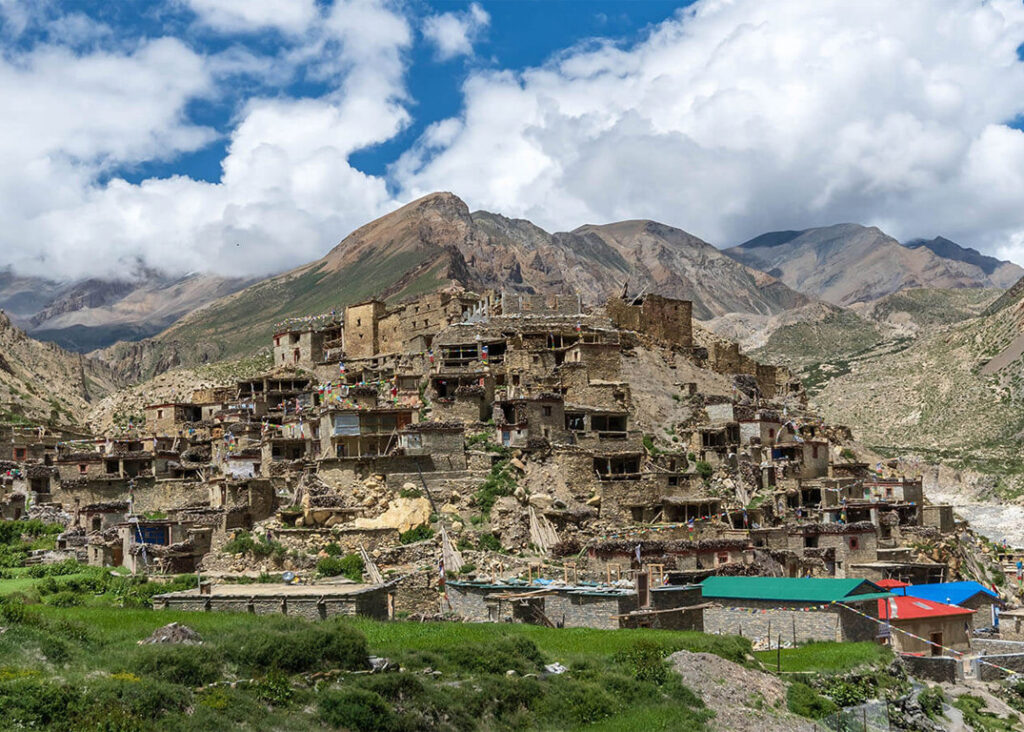
The village offers a fascinating glimpse into its unique customs, ancient traditions, and warm hospitality.
Also Read: Exploring the Serenity of Phu Village and Go on Phu Village trek
Exploring Nar Village is like stepping back in time, where ancient rituals, vibrant festivals, and intricate handicrafts come to life. Visitors can engage with the locals, learn about their customs, and even partake in traditional ceremonies. The village’s tranquil ambiance and picturesque setting make it a perfect retreat for those seeking an authentic cultural experience.
The Nar Village Trek: A Journey into the Wild
The Nar Village trek, also known as the Nar Phu Valley Trek, is a thrilling adventure that takes trekkers through remote and less-explored trails in the Annapurna region. This trek is ideal for those who crave solitude and seek to immerse themselves in pristine nature. The trail weaves through lush forests, cascading waterfalls, and rugged terrain, offering breathtaking vistas of snow-capped peaks, including Annapurna II, Gangapurna, and Tilicho Peak.
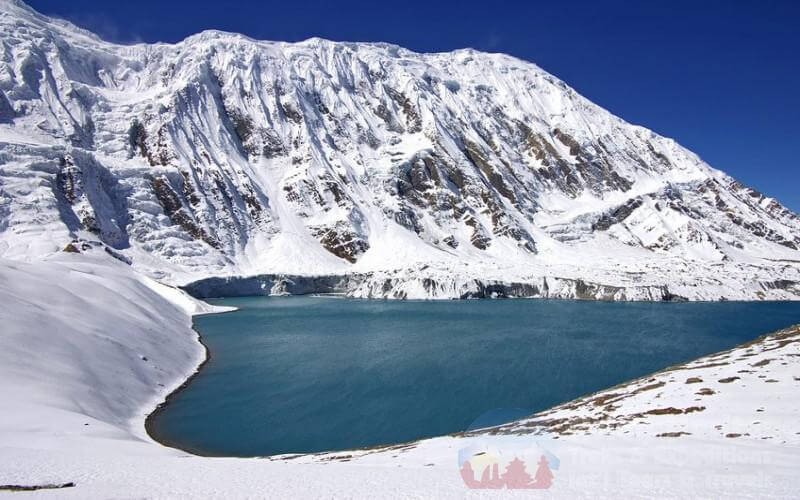
Starting from the quaint village of Koto, the trek gradually ascends, allowing trekkers to acclimatize to the high altitude. As you venture deeper into the Nar Phu Valley, you’ll encounter picturesque villages, suspended monasteries, and ancient Buddhist stupas, each narrating its own tale of history and spirituality.
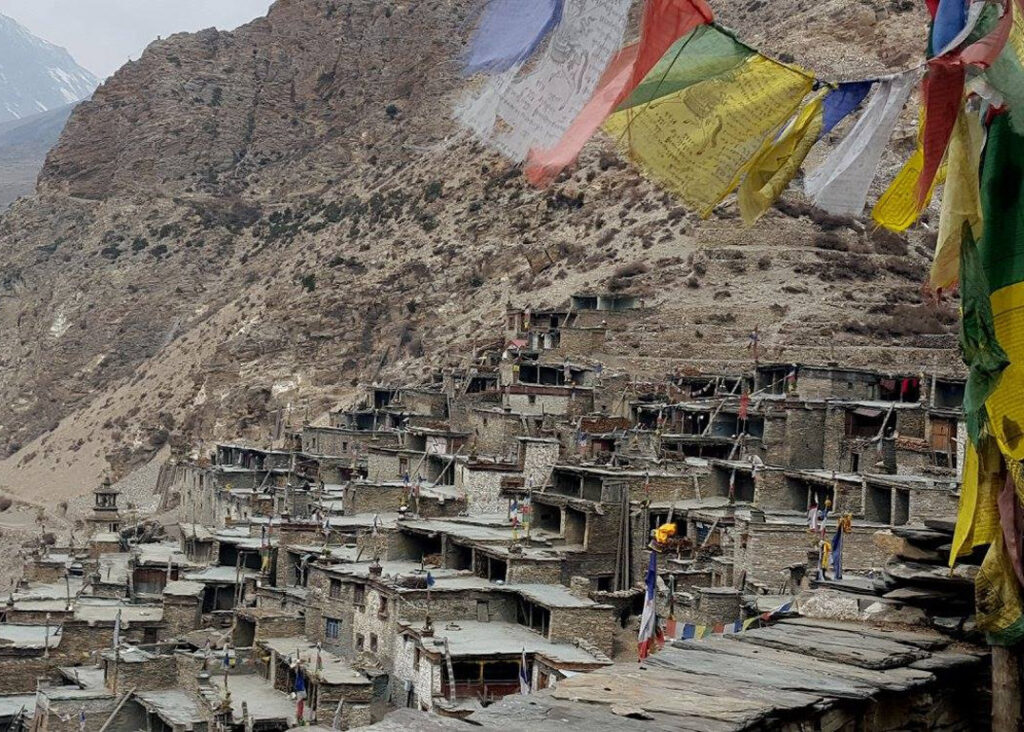
The hospitality of the locals is unparalleled, and their warm smiles will accompany you throughout the journey.
The highlight of the trek is reaching Nar Village itself. The awe-inspiring landscapes, with the village perched against a backdrop of towering mountains, create a surreal atmosphere. The traditional stone houses, prayer flags fluttering in the wind, and the melodious chants emanating from the monasteries all contribute to the unique charm of Nar Village.

Take the time to interact with the locals, taste the authentic Nepalese cuisine, and witness their traditional dances to truly immerse yourself in the local culture.
Practical Tips and Considerations
Before embarking on the Nar Village trek, it’s important to prepare adequately. Here are a few practical tips to make your journey more enjoyable:
- Physical Fitness: The Nar Village trek is moderately challenging, requiring a good level of physical fitness. It’s advisable to engage in regular exercise and cardio activities to prepare your body for the trek.
- Permits: Ensure you have the necessary permits to enter the restricted area of Nar Phu Valley. These can be obtained through a registered trekking agency or in Kathmandu. To visit Nar Village and trek in the Nar Phu Valley region, you will need certain permits. The main permits required for the Nar Village trek are the Annapurna Conservation Area Permit (ACAP) and the Restricted Area Permit (RAP).
- Weather and Season: The best time to undertake the Nar Village trek is during the spring (March to May) and autumn (September to November ). These seasons offer clear skies, pleasant temperatures, and stunning views. It’s important to check weather forecasts and trail conditions before setting off.
- Packing Essentials: Pack warm clothing, comfortable trekking shoes, a good-quality backpack, a sleeping bag, and a sturdy tent. Don’t forget to bring essentials such as sunscreen, a hat, sunglasses, a water bottle, and a first aid kit.
- Hiring a Guide: While the Nar Village trek can be done independently, hiring a local guide is highly recommended. They have in-depth knowledge of the trail, can assist with navigation, and provide insights into the local culture and customs.
- Altitude Sickness: As the trek reaches high altitudes, it’s crucial to acclimatize properly and be aware of the symptoms of altitude sickness. Stay hydrated, ascend gradually, and listen to your body. If symptoms worsen, descend to lower altitudes immediately.
Unique Cultural Experiences
Nar Village offers a range of unique cultural experiences that are sure to leave a lasting impression on any visitor. One of the highlights is witnessing the traditional festivals celebrated by the Nar indigenous people. These festivals are characterized by vibrant costumes, mesmerizing dances, and ancient rituals. The locals welcome outsiders to join in the festivities, providing a rare opportunity to immerse oneself in the local culture.
You may also like: Phakding facts you need to know
Additionally, the Nar Village area is home to several ancient monasteries and religious sites that hold immense spiritual significance. One such monastery is the Tashi Lhakhang Monastery, a Buddhist monastery perched on a hill overlooking the village. Visitors can explore the monastery, interact with the monks, and even participate in meditation sessions to gain insight into the Buddhist way of life.
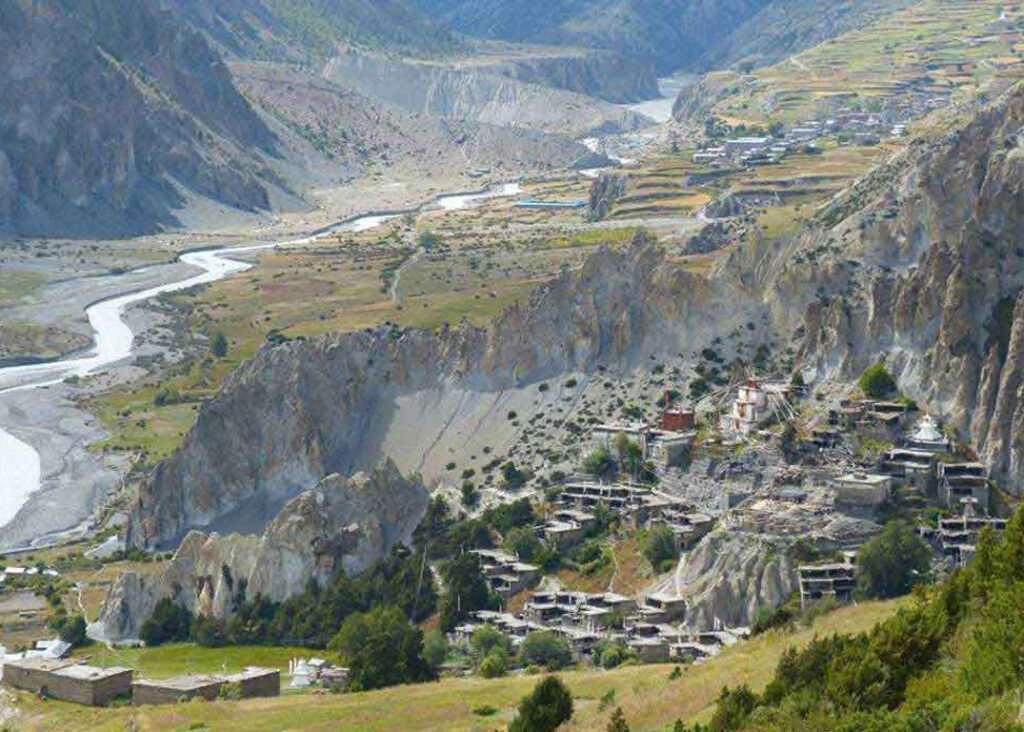
The Nar indigenous people are known for their exceptional craftsmanship, particularly in weaving and pottery. During your visit, you can observe skilled artisans at work, creating intricate textiles and pottery using traditional techniques. Some even offer workshops where you can learn the art of weaving or try your hand at pottery-making under their expert guidance.
Wildlife and Nature
The Nar Village trek is not just about cultural immersion but also an opportunity to connect with nature. As you traverse the trail, you’ll encounter diverse flora and fauna that thrive in this remote region. The Annapurna Conservation Area, through which the trek passes, is home to rare species such as the snow leopard, Himalayan blue sheep, and various species of birds.

The trail takes you through dense forests of pine, oak, and rhododendron, creating a mesmerizing backdrop.
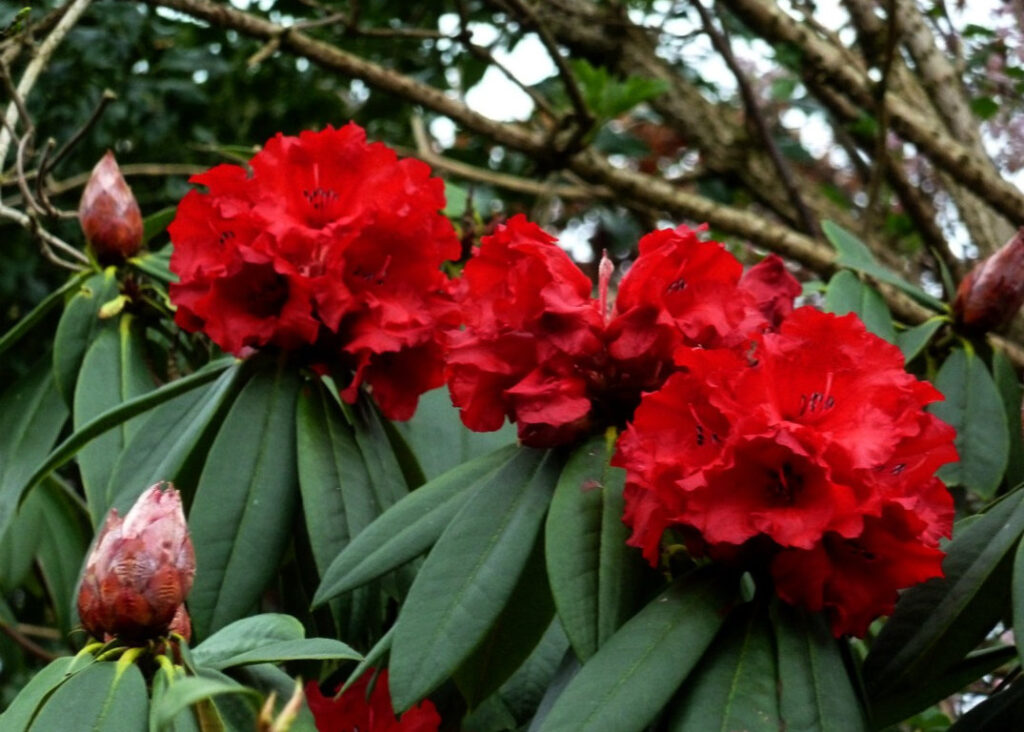
During spring, when the rhododendrons are in full bloom, the entire trail transforms into a riot of colors. The sight of these vibrant flowers against the backdrop of snow-capped mountains is simply breathtaking.
Along the way, you may also come across pristine waterfalls cascading down rocky cliffs, creating a refreshing ambiance. These natural wonders provide perfect spots to take a break, relax, and soak in the serenity of the surroundings.
Connecting with Local Communities
The Nar Village trek offers ample opportunities to connect with local communities along the trail. As you pass through small villages, you’ll have the chance to interact with friendly locals and learn about their daily lives.
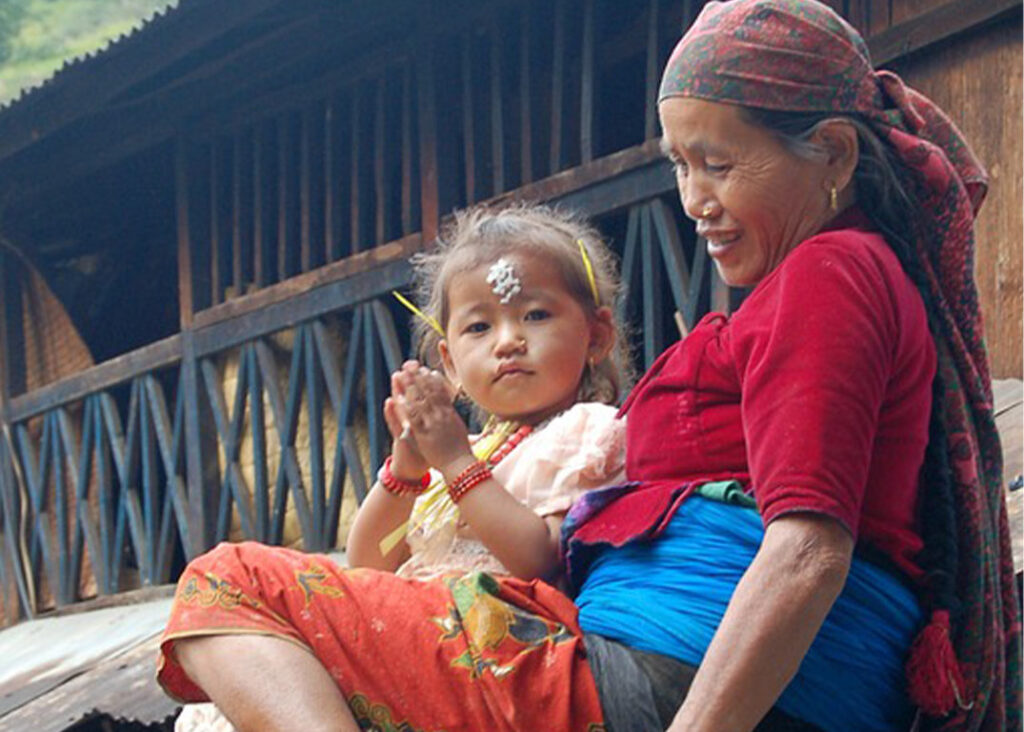
Whether it’s sharing a cup of tea with a shepherd, observing farmers tending to their fields, or conversing with children on their way to school, these encounters provide insights into the resilience and simplicity of mountain life.
Popular: 19 You Need To Know Before Visiting Nepal
Many trekkers find joy in contributing to the local economy by staying in teahouses run by local families. These teahouses offer basic accommodation and meals, and staying in them not only provides a comfortable resting place but also supports the local community directly.
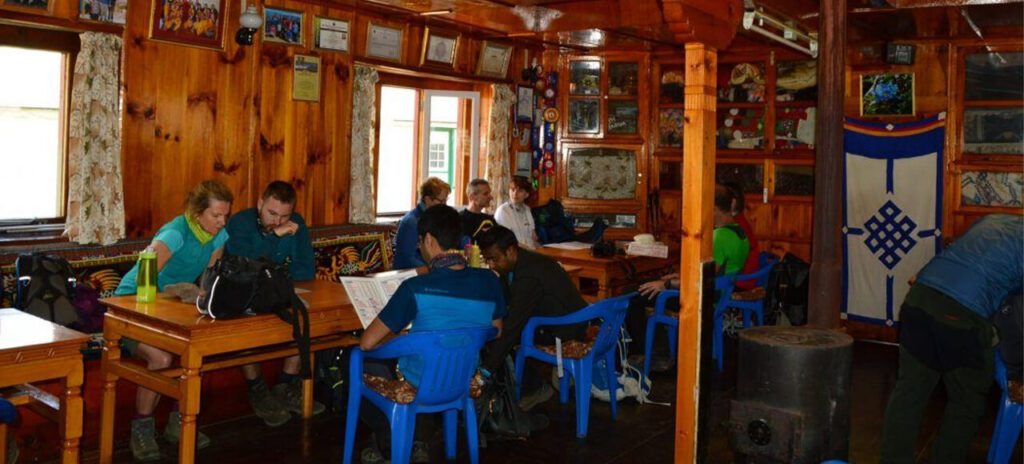
Through these interactions, you’ll gain a deeper understanding of the challenges and joys of living in such remote regions. The warmth and hospitality of the people will undoubtedly leave a lasting impression on your heart.
Highlights of this trek
The Nar Village and Nar Village trek offers an unforgettable adventure that combines cultural immersion, natural beauty, and human connection. From the vibrant traditions and festivals of the Nar indigenous people to the mesmerizing landscapes and encounters with wildlife, this trek is an enriching experience from start to finish.

Whether you are a seasoned trekker or an adventurer seeking a new challenge, the Nar Village trek should be on your bucket list. It promises to take you on a journey that transcends the physical and allows you to delve deep into the heart of Nepal’s cultural and natural treasures.
As you embark on this remarkable adventure, remember to tread respectfully, honoring the local customs and traditions. Take the time to learn a few basic phrases in the local language, as it will go a long way in fostering connections and showing your appreciation for the local culture.

During your trek, embrace the simplicity of life in the mountains. Immerse yourself in the beauty of nature, pause to admire the majestic peaks, and relish the quietude that only a remote region like Nar Village can offer. Disconnect from the hustle and bustle of daily life, and allow yourself to be fully present in the moment.
Lastly, as you prepare for your Nar Village trek, consider the responsible travel practices that will help preserve the natural and cultural heritage of the area. Respect the environment by practicing proper waste management, following designated trails, and refraining from disturbing wildlife or plants. Additionally, support local initiatives that promote sustainable tourism and contribute to the well-being of the local communities.







